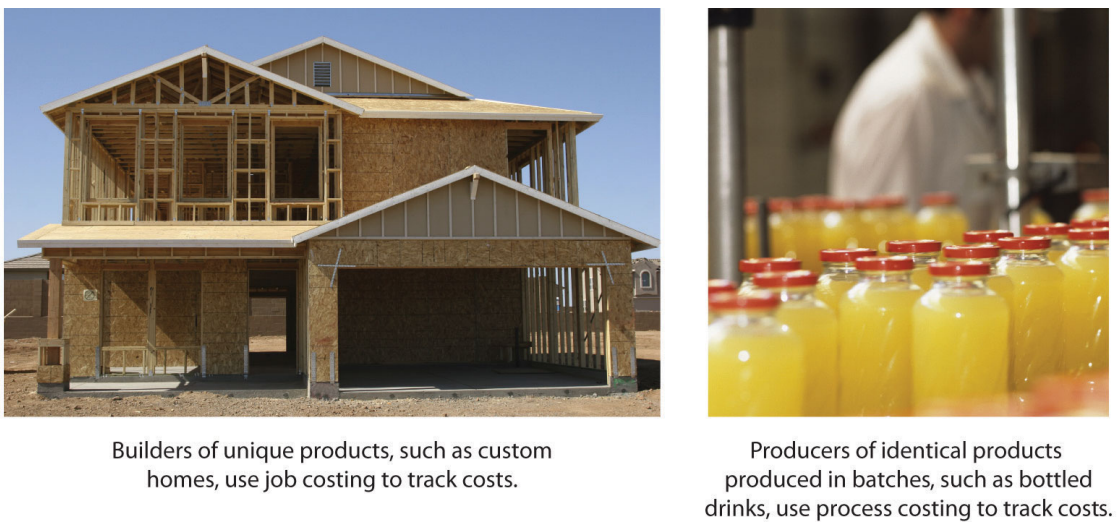32 5.2 Differentiating Job Costing from Process Costing
-
Last updated
- Dec 28, 2020
Learning Objectives
- Distinguish between job costing and process costing
Question: Financial accounting classes cover how merchandising companies, such as Sears and Lowe’s, account for the cost of the goods that they purchase from a supplier and later sell to a customer. These companies simply record the cost of the purchase in an inventory account and account for any returns and allowances, discounts, and shipping costs. Once the merchandise is sold, the related inventory costs are transferred to cost of goods sold. However, manufacturing companies are different. How do manufacturing companies account for inventory at different stages of production?
Job Costing
Question: We define a job1 as an activity that produces a unique product—one that can be easily distinguished from other products. For example, building a custom home is a job because the home is unique and easy to distinguish from other homes. An accounting firm’s provision of tax services to a client is another example of a job. How does a job costing system help companies that produce unique products or jobs?
Tracking revenues and costs for each job is important for several reasons:
- Like Dan at Custom Furniture, managers want to assess the accuracy of cost estimates. This is particularly important when prices are based on estimated costs.
- Managers want to review actual revenues and costs for each job to see if the job is profitable.
- Managers want to compare actual costs with estimated costs throughout a project so they can identify unexpected changes as early in the project as possible. For example, if the cost of mahogany wood increases by 50 percent, Custom Furniture might renegotiate the price of a mahogany table with the customer. If it’s too late to renegotiate the price of a current job, the cost increase could be built into the pricing of future jobs.
Process Costing
Question: Job costing may work for builders of custom furniture and tax professionals, but does job costing make sense for a company that produces soft drinks? Imagine trying to track costs for each can of soda produced. A job costing system would not be appropriate for this type of company. A different costing system, called process costing, would be a better fit. Which types of companies use this type of system?
|
Job
Costing |
Process Costing |
|---|---|
| Custom homes | Oil |
| Custom vans | Chemicals |
| House painting services | Paint |
| Movies | Lumber |
| Airplanes | Milk |
| Bridges | Pencils |
| Legal services | Paper |

Key Takeaway
Review problem 5.1
Identify whether each company listed in the following would use job costing or process costing.
- Coca-Cola Company
- Kelly Moore Paint
- Volkswagen—custom campers
- Universal Studios—movie division
- Chevron Corporation
- Michelin
- Boeing Co.
- Ernst & Young—tax division
Definitions
- An activity that results in a unique product, one easily distinguished from other products.
- A system that records revenues and costs for each job.
- A costing system used by companies that produce identical units of product in batches employing a consistent process.


